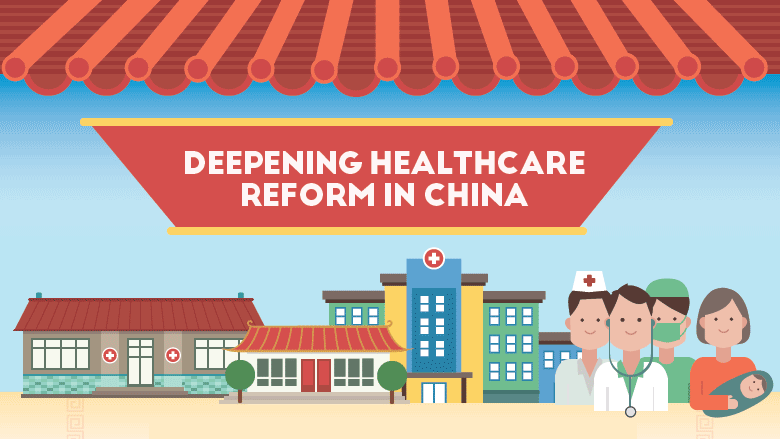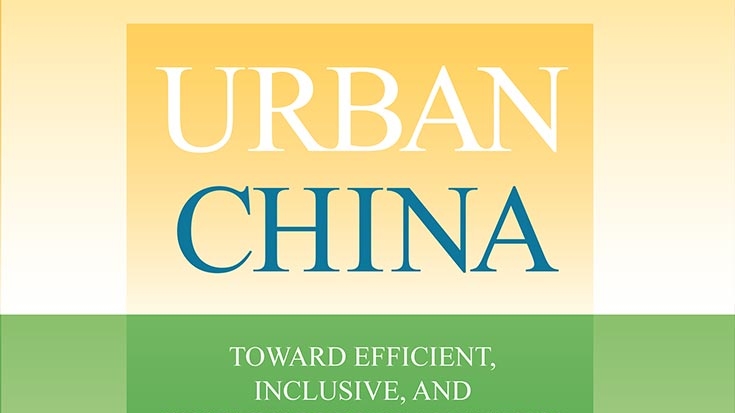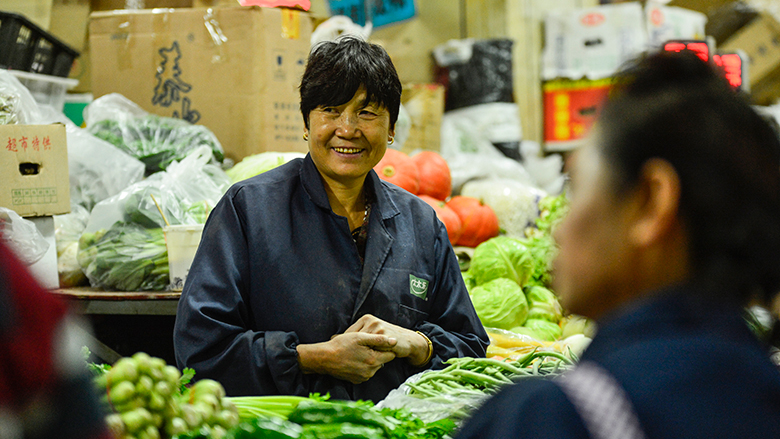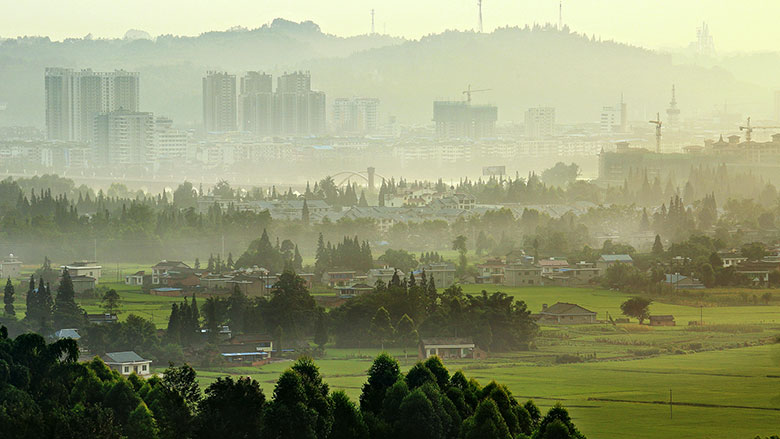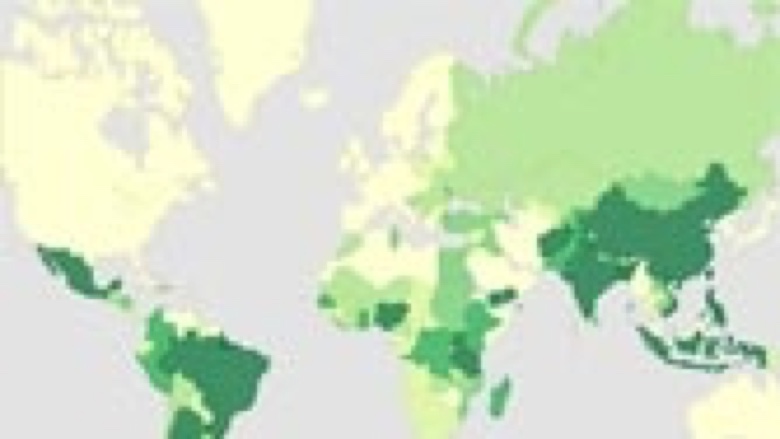China began its partnership with the Bank in 1980, just as it embarked on its reforms. Starting as a recipient of support from the International Development Association (IDA), the Bank Group’s fund for the poorest, China graduated from IDA in 1999 and became a donor in 2007. It became the World Bank’s third largest shareholder upon completion of the capital increase approved in 2010, the 30th anniversary of its partnership.
The nature of the Bank’s activities in China has evolved over time as China’s needs and level of development have changed. In the early years, the World Bank brought international experience to help design economic reform strategies, improve project management, and address key bottlenecks to growth. More recently, this two-way relationship has evolved —the World Bank offers international expertise to help address China’s key development challenges and pilot reforms through projects and programs; and China’s development experiences enhance the Bank’s global knowledge and capacity to help other developing countries.
Research
Joint flagship studies, which began more than 10 years with China 2030: Building a Modern, Harmonious, and Creative Society, have been important for deepening the dialogue on policies and Bank programs. These studies have also provided a model for other middle-income countries. Here are two recent examples of our joint studies with the Development Research Center of the State Council and the Ministry of Finance:
Innovative China: New Drivers of Growth, a joint report by the Development Research Center of China’s State Council, the Ministry of Finance, and the World Bank Group, proposes that China addresses its productivity challenges by promoting the “three Ds” – removing distortions in the economy, accelerating diffusion of existing advanced technologies and innovations, and fostering discovery of new technologies, products, and processes so as to expand China’s productivity frontier. The report develops recommendations in seven areas to promote the “three Ds.” These recommendations focus on strengthening competition across product and factor markets and creating a level playing field for all investors, investing in human capital and improving the targeting of support for innovation and entrepreneurship, and adapting the model of economic governance to adjust the balance between the state and the market.
Four Decades of Poverty Reduction in China: Drivers, Insights for the World and the Way Ahead, a joint report by the Development Research Center of China’s State Council, the Ministry of Finance, and the World Bank Group reviews China’s success in eliminating extreme poverty. It shows that sustained growth and economic transformation created the opportunities that helped close to 800 million poor Chinese achieve an income above $1.90 per day. The report also shows that public investments in infrastructure and, more recently, increased targeted transfers played an important role in poverty reduction. China’s success was aided by favorable initial conditions and catalyzed by China’s economic reform starting in the late 1970s. Nonetheless, some 220 million Chinese still had incomes below $5.50 a day in 2019. Going forward, the report concludes, China’s social policies need to evolve to address the specific vulnerabilities of this group.
China Country Climate and Development Report (CCDR) is the World Bank Group’s new core diagnostic report that provides analysis and recommendations on integrating China’s efforts to achieve high-quality development with the pursuit of emission reduction and climate resilience. According to the report, climate risks pose a threat to China’s long-term prosperity. Yet, the country’s transition to carbon neutral and resilient development will create transition risks. However, China is also well positioned to turn climate action into an economic opportunity. The report shows that broader structural and market reforms could complement climate action and help achieve China’s climate and development objectives. The CCDR recommends six interconnected policy packages, which will allow China to green and grow its economy at the same time.
A new joint flagship study addressing the challenges of decarbonizing and greening China’s economy is under preparation.
Projects
World Bank-financed projects introduced innovations or piloted new approaches and serve as platforms for knowledge exchange. The current lending program has a strong focus on global public goods such as climate change, environmental protection and reduction of marine plastics. Here are some of our recent projects and results in China:
Facilitating Low-Carbon Energy Transition
· The Shaanxi Energy Transition and Innovation Demonstration in the Heating Sector Project, approved in June 2024, supports heat supply from renewable energy and low-carbon energy sources and promotes a pricing reform pilot program in the heating sector in China’s Shaanxi province. The project aims to demonstrate innovative solutions to increase heat supply from renewable energy and low-carbon energy sources, including geothermal, waste heat, and electricity. In addition, it supports advancing pricing and billing reforms to help improve financial sustainability of the heating sector. The financing will support investment in enabling infrastructure and the inclusive process of designing and implementing the reform pilot program.
Greening Agriculture and Rural Development
· The Sustainable Fodder Production and Low Methane Livestock Development Program-for-Results, approved in June 2024, helps improve productivity, lower emissions of methane and other greenhouse gases (GHG) and enhance climate resilience in the livestock sector in China's Gansu province. The program will draw on the World Bank’s global experience to bring low-emission technologies and practices to Gansu’s livestock farms. Program-supported institutional strengthening, establishment of the MRV (Measurement, Reporting and Verification) system, and scaling up green product certification in livestock value chains will contribute to operationalizing and advancing China’s global public goods agenda.
· The Methane-Reducing and Water-Saving Paddy Rice Program for Results (Hunan), approved in May 2023, supports a program that will reduce methane emissions, improve irrigation and drainage services, and provide agricultural support for climate-resilient rice production in Hunan province, China’s largest rice production area. The program will contribute to global public goods, in particular climate change mitigation, and the creation of replicable and scalable knowledge and experiences for China and other rice-growing countries globally by developing a sustainable model for rice-growing.
· The China Green Agricultural and Rural Revitalization Program for Results (Hubei and Hunan), approved in April 2023, supports China’s global public goods agenda by promoting the greening of agriculture and rural development in Hubei and Hunan provinces. The program will reduce greenhouse gas (GHG) emissions from crop and livestock farming, increase carbon sequestration in farmlands, and improve biodiversity protection and restoration in agricultural ecosystems, while strengthening the institutional capacity of local governments to integrate environmental and decarbonization objectives in government rural revitalization plans and investments.
· The Green Agricultural and Rural Revitalization Program for Results, approved in March 2022, promotes green agriculture and rural development in China’s southwest region and supports the government’s national Rural Revitalization Program. Program activities comprise institutional capacity building, training and agricultural extension services, financial incentives to promote climate-smart and greener agriculture technologies and practices, and investments in rural wastewater and solid waste management services. The program also includes investments in monitoring, evaluation, and verification of environmental outcomes and supports the development of program-based budgets to better link resource use with outcomes at the local government level.
Decarbonizing the Transport Sector
· The Low Carbon Transition of Urban Mobility in Yichang (Hubei) program, approved in May 2024, helps Yichang City in Hubei Province shift to a city-wide environmentally cleaner transportation system that will improve travel for residents and lower greenhouse gas emissions. The program will support the city to enforce cleaner vehicle emission standards and retire older, heavily polluting freight vehicles and buses. It will support compact and dense urban development that prioritizes public transit, walking and cycling, make public transportation more attractive, and improve parking management. The program will also help the city pilot participation of the transport sector in an emissions trading scheme. The program will help Yichang reach its low-carbon goals, while delivering global public goods through carbon emission reductions.
Strengthening Water Pollution Control and Ecological Protection
· The Yangtze River Protection and Ecological Restoration Program (Hubei), approved in March 2023, aims to enhance ecological protection and reduce water pollution along China’s Yangtze River basin in Hubei Province. This financing will strengthen ecosystem management, reduce water pollution from plastics and animal manure, and improve wastewater treatment. The program focuses on improving coordination, data collection and sharing, and water management planning and allocation across the river basin.
· The Yangtze River Protection and Ecological Restoration Program, approved in December 2021, helps enhance ecological protection and reduce water pollution in China’s Yangtze River basin. The program will support coordination across line agencies and levels of government by strengthening data collection and sharing, and by improving water management and allocation. Local level activities will help reduce plastics pollution by developing incentives for the collection of agricultural plastic film, improve wastewater management and collection systems at the township level, and address agricultural pollution through improved management of livestock manure.
· The Yellow River Basin Ecological Protection and Environmental Pollution Control Program (Gansu and Shandong), approved in March 2024, helps enhance management and protection of land and water resources and restoration of natural ecosystems in the Yellow River Basin. The program will support implementation of sustainable land and water management practices, address soil erosion, water pollution, fire risks, and improve soil and water conservation. The program will also contribute to strengthening government capacity for ecosystem restoration and protection, including at the provincial level.
· The Yellow River Basin Ecological Protection and Environmental Pollution Control Program, approved in March 2022, helps address water scarcity and ecosystem degradation in China’s Yellow River basin. The program will support China’s strategy for the basin and will contribute to core objectives of the national plan around ecological and environmental protection and promoting water conservation. Provincial level activities will support ecological protection, water use efficiency, and water pollution control in the middle reach of the Yellow River, where erosion, ecosystem degradation, and water scarcity are pronounced.
Reducing Plastic Pollution
· The Plastic Waste Reduction Project (Shaanxi), approved in March 2023, helps reduce plastic pollution from municipal solid waste and agricultural plastic film in rural areas of China’s Shaanxi Province, and improve provincial plastic waste management with potential lessons for the national level. The project will support China’s effort to improve plastic waste management, reduce plastic pollution as well as GHG emissions, strengthen provincial regulations and institutional capacities, and establish models for urban-rural integration in waste management. The experience gained through this project is expected to be replicated and inform reforms and practices in other provinces as well as further policy work at the national level.
· The China Plastic Waste Reduction Project, approved in June 2021, helps improve plastic waste management at the national and subnational levels in China and reduce plastics pollution from municipal solid waste. At the national level, the project will help develop policy and implementation mechanisms to reduce plastics pollution, improve resource utilization through recycling, and support waste minimization and prevention. At the subnational level, it will help improve the functionality of solid waste management systems, demonstrate the urban-rural integration of solid waste management and plastic pollution control, and pilot enhanced separation of wastes and increased recycling rates.
Last Updated: Oct 24, 2024





